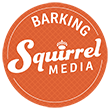
Published On
February 8, 2024Crafting Compelling Storyboards for Your Cinematic Storytelling Videos
Storyboarding is a critical pre-production process for creating engaging and effective cinematic storytelling videos. It involves visualizing your narrative through a sequence of images representing key moments and scenes, similar to a comic strip. A well-crafted storyboard helps ensure the seamless translation of your story concept into a captivating visual experience.
At Barking Squirrel Media, we recognize the power of professional storyboarding in producing cinematic stories that connect brands with their audiences both in Cincinnati and nationwide.
In this comprehensive guide, we will dive into the art of storyboarding, exploring its significance in the creation of cinematic storytelling videos, and discussing essential techniques and best practices. We will cover the benefits of storyboarding, its vital role in the pre-production process, and how to effectively plan and visualize your story through illustrations, annotations, and shot descriptions.
This guide aims to provide valuable insights into the methods professionals use to develop and refine storyboards, ensuring that their cinematic storytelling videos accurately convey the intended narrative and engage the audience.
By understanding the importance of storyboarding and implementing the appropriate techniques, your brand can build a solid foundation from which to bring your cinematic storytelling videos to life. A professionally crafted storyboard will help guide your production process, ensure a cohesive narrative structure, and facilitate effective communication between your creative team members.
The Importance of Storyboarding in Cinematic Storytelling Videos
Storyboarding plays a vital role in the creation of cinematic storytelling videos for the following reasons:
- Clear Visualization: Storyboarding helps you visualize your story concept and identify essential elements such as locations, shots, and compositions required for the video production. It allows you to explore various creative possibilities before setting foot on the shooting location.
- Narrative Structure: A well-designed storyboard ensures your story has a clear beginning, middle, and end, providing a cohesive structure for your video. It enables you to identify potential issues in your narrative early on and make necessary revisions to refine your story.
- Team Communication: Storyboards serve as a visual reference for your entire production team, enabling effective communication of your ideas and ensuring that everyone is on the same page regarding the desired outcome of your video.
- Time and Budget Management: A comprehensive storyboard helps identify potential challenges and resources required for the production, enabling better planning and optimizing the allocation of your time and budget. Planning your shots and visual elements in advance leads to smoother production processes and improved overall efficiency.
Essential Techniques for Effective Storyboarding
Utilize these techniques to craft compelling storyboards for your cinematic storytelling videos:
- Thumbnail Sketches: Begin by creating small, rough thumbnail sketches to plan your scenes and shots. These initial sketches establish the composition, perspective, and general structure of the scene. Thumbnails allow you to experiment with various ideas and make adjustments before committing to more detailed illustrations.
- Detailed Illustrations: Once you have a general structure in place, refine your sketches into more detailed illustrations that accurately represent the visual elements of your video. Ensure you maintain consistency in character design, location, and visual assets throughout your storyboard.
- Shot Descriptions and Annotations: Include shot descriptions and annotations alongside the illustrations to provide essential information such as camera movement, shot type, duration, and any dialogue or sound effects. This documentation guides the production team in executing your vision accurately.
- Scene Transitions and Pacing: Carefully plan scene transitions and pacing within your storyboard to create a seamless flow between different shots and sequences. This planning helps maintain narrative continuity and keeps your audience engaged throughout the video.
Best Practices for Storyboarding Cinematic Storytelling Videos
Ensure your storyboard effectively communicates your ideas and facilitates a seamless production process by adhering to these best practices:
- Break Down Your Script: Before creating your storyboard, break down your script into distinct scenes and shots. This breakdown enables you to pinpoint the vital aspects of each scene and informs the creative decisions you make while planning your visuals.
- Keep It Clear and Simple: Focus on clarity and simplicity in your illustrations and annotations. Remember that your storyboard’s primary purpose is to communicate your ideas effectively to your production team, so clear visuals and concise descriptions are key.
- Utilize References and Inspiration: Gather reference material, such as photos, concept art, or film stills, to help inspire and inform your storyboard. Study the work of other filmmakers, commercials, or even comic books to gain insights into visual storytelling techniques.
- Iterate and Refine: Storyboarding is an iterative process, so don’t be afraid to make modifications and revisions until your vision is accurately conveyed. The more refined your storyboard, the smoother your production process will be.
Tools and Applications for Professional Storyboarding
Leverage the power of technology to streamline your storyboarding process with these tools and applications:
- Traditional Media: Many storyboard artists still prefer using traditional pencil and paper for their work, granting them the freedom to experiment and iterate quickly. Scanners and drawing tablets can be used to digitize these traditional sketches for sharing with the production team.
- Digital Illustration Software: Applications like Adobe Photoshop, Corel Painter, and Procreate can be utilized for digital storyboarding, providing a range of advanced tools and brushes that mimic traditional media. Digital illustrations also allow for easy modifications and enhanced collaboration options.
- Dedicated Storyboarding Applications: Software like Storyboarder, Toon Boom Storyboard Pro, and FrameForge make the creation and organization of storyboards more accessible, thanks to specialized tools designed explicitly for this purpose.
Conclusion
Crafting a compelling storyboard is an indispensable step in creating engaging cinematic storytelling videos that capture your audience’s attention and convey your brand’s message effectively. By understanding the significance of storyboarding, applying essential techniques, following best practices, and leveraging the appropriate tools, your brand can lay a solid foundation for a successful video production.
Looking to take your brand’s visual content to the next level? Look no further than Barking Squirrel Media! Our team of skilled specialists specializes in Chicago video production and will work with you every step of the way to bring your brand’s story to life. From storyboarding to post-production, we guarantee a captivating and unforgettable cinematic storytelling video. Schedule a consultation today to elevate your brand‘s visual content and create an impact that lasts!
